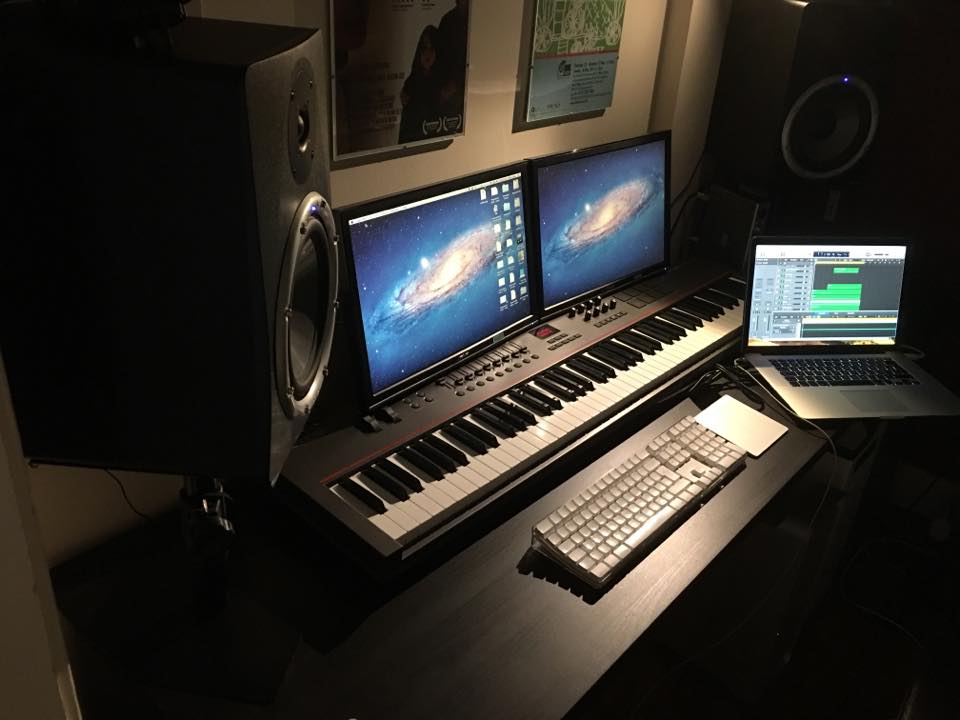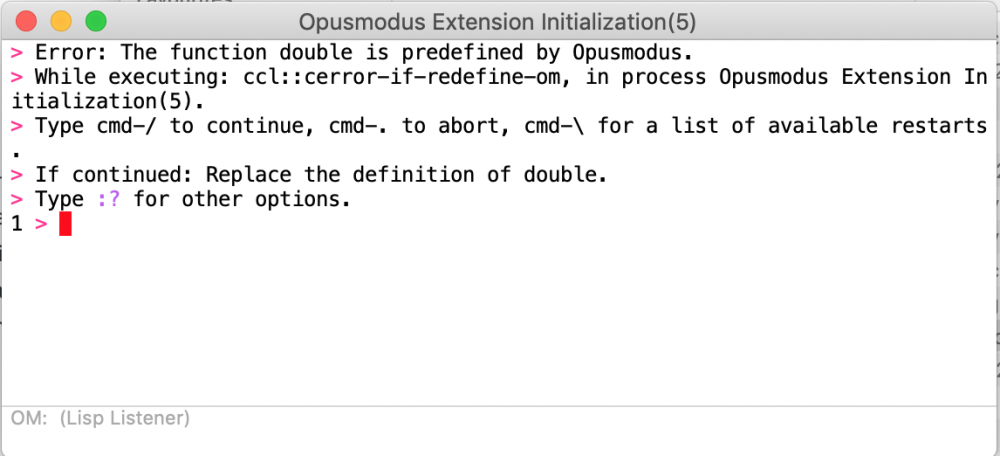-
Posts
28 -
Joined
-
Last visited
Contact Methods
- Website URL
Profile Information
-
Gender
Male
-
Location
Edinburgh, Scotland
Recent Profile Visitors
The recent visitors block is disabled and is not being shown to other users.
-
 BrianCope reacted to a post in a topic:
Happy New Year 2024
BrianCope reacted to a post in a topic:
Happy New Year 2024
-
.jpg.e9f9cf75853400e41decfbb95b5787d5.thumb.jpg.9228dc058ca75cbec8d8dd1565ccc593.jpg)
Zoom into OPUSMODUS with Stéphane Boussuge
BrianCope commented on opmo's event in Community Calendar
-
BrianCope is attending Zoom into OPUSMODUS with Stéphane Boussuge
-
this is what I did as I explained in my original post but I was not asked for permission to create a new OM folder. Is it imperative that OM creates the folder and if so, how do I begin the installation process again so that it does request these permissions?
-
Yeah, I put the old Opusmodus back in my home directory and removed the file in Extensions but the error messages still comes up when I launch OM
-
the new installation didn't create a new folder in my home directory
-
Can you tell me where that folder is located? Can't seem to find it.
-
Hello I renamed and compressed the OM user folder then deleted the original file as instructed. Updated, opened and entered new registration code but I wasn't asked for permission to create a new user folder in my home directory. All I get is this error message:
-
Sorry to hear about Nigel's passing. Do we know when and how we can pass condolences to his family? Thanks Brian
-
 BrianCope reacted to a post in a topic:
Infinity-series applied to scales/modes
BrianCope reacted to a post in a topic:
Infinity-series applied to scales/modes
-
.jpg.e9f9cf75853400e41decfbb95b5787d5.thumb.jpg.9228dc058ca75cbec8d8dd1565ccc593.jpg)
code Infinity-series applied to scales/modes
BrianCope replied to BrianCope's topic in Support & Troubleshooting
Hi Andre, loving the new function so thank you so much for creating it. How might I add my own tonality? Can I do a setf to create a scale and then insert it in TONALITY? Or do I need to add it to the library? Thanks Brian (setf my-scale (make-scale 'c2 49 :alt '(1 2 1 1)))- 20 replies
-
- inifity-series
- scales
-
(and 1 more)
Tagged with:
-
.jpg.e9f9cf75853400e41decfbb95b5787d5.thumb.jpg.9228dc058ca75cbec8d8dd1565ccc593.jpg)
code Infinity-series applied to scales/modes
BrianCope replied to BrianCope's topic in Support & Troubleshooting
Thanks André, I am going to have so much exploring this tomorrow. Best wishes Brian- 20 replies
-
- inifity-series
- scales
-
(and 1 more)
Tagged with:
-
 BrianCope reacted to a post in a topic:
Infinity-series applied to scales/modes
BrianCope reacted to a post in a topic:
Infinity-series applied to scales/modes
-
.jpg.e9f9cf75853400e41decfbb95b5787d5.thumb.jpg.9228dc058ca75cbec8d8dd1565ccc593.jpg)
code Infinity-series applied to scales/modes
BrianCope replied to BrianCope's topic in Support & Troubleshooting
Thank you. No, I've only ever used libraries when working with spectral tools. I'll have a look. Best, Brian- 20 replies
-
- inifity-series
- scales
-
(and 1 more)
Tagged with:
-
 BrianCope reacted to a post in a topic:
Infinity-series applied to scales/modes
BrianCope reacted to a post in a topic:
Infinity-series applied to scales/modes
-
 BrianCope reacted to a post in a topic:
Infinity-series applied to scales/modes
BrianCope reacted to a post in a topic:
Infinity-series applied to scales/modes
-
.jpg.e9f9cf75853400e41decfbb95b5787d5.thumb.jpg.9228dc058ca75cbec8d8dd1565ccc593.jpg)
code Infinity-series applied to scales/modes
BrianCope replied to BrianCope's topic in Support & Troubleshooting
Thanks André, yes that produces the same sequence as the c major example starting on g4. Tried it with longer sequences and with different modes: (setf pitch (step-to-pitch :steps (integer-to-interval (reset-seq (infinity-series 2848 '(1 0)))) :pitches (multiple-expand-tonality :startpitch 'c0 :octaves 7 :tonality '(minor-hexatonic)) :start 'g4)) Perfect!! I really appreciate your help with this. Combined with the new time-swallow it's amazing. Best wishes Brian- 20 replies
-
- inifity-series
- scales
-
(and 1 more)
Tagged with:
-
.jpg.e9f9cf75853400e41decfbb95b5787d5.thumb.jpg.9228dc058ca75cbec8d8dd1565ccc593.jpg)
code Infinity-series applied to scales/modes
BrianCope replied to BrianCope's topic in Support & Troubleshooting
Thanks André, I'll give it some more thought. Best wishes Brian- 20 replies
-
- inifity-series
- scales
-
(and 1 more)
Tagged with:
-
.jpg.e9f9cf75853400e41decfbb95b5787d5.thumb.jpg.9228dc058ca75cbec8d8dd1565ccc593.jpg)
code Infinity-series applied to scales/modes
BrianCope replied to BrianCope's topic in Support & Troubleshooting
Thanks André, I thought it might be that. It works now with the integers as they are but I still need to solve the problem of how the infinity-series projects the intervals. The integers produced by the infinity series work like this http://web.archive.org/web/20070523051434/http://www.pernoergaard.dk:80/eng/strukturer/uendelig/ukonstruktion01.html So, applying the resultant integers from the infinity-series function doesn't work. I think the scale mode would need to be built into the function? Best wishes Brian- 20 replies
-
- inifity-series
- scales
-
(and 1 more)
Tagged with:
-
.jpg.e9f9cf75853400e41decfbb95b5787d5.thumb.jpg.9228dc058ca75cbec8d8dd1565ccc593.jpg)
code Infinity-series applied to scales/modes
BrianCope replied to BrianCope's topic in Support & Troubleshooting
Thanks André I tried to superimpose the first 64 infinity-series onto the c major scale but it kept returning an error? Also, I couldn't find the tonality-step function? Brian (step-to-pitch :steps '(0 1 -1 2 1 0 -2 3 -1 2 0 1 2 -1 -3 4 1 0 -2 3 0 1 -1 2 -2 3 1 0 3 -2 -4 5 -1 2 0 1 2 -1 -3 4 0 1 -1 2 1 0 -2 3 2 -1 -3 4 -1 2 0 1 -3 4 2 -1 4 -3 -5 6) :pitches '(c3 d3 e3 f3 g3 a3 b3 c4 d4 e4 f4 g4 a4 b4 c5 d5 e5 f5 g5 a5 b5 c6) :start 'g4)- 20 replies
-
- inifity-series
- scales
-
(and 1 more)
Tagged with:
-
.jpg.e9f9cf75853400e41decfbb95b5787d5.thumb.jpg.9228dc058ca75cbec8d8dd1565ccc593.jpg)
code Infinity-series applied to scales/modes
BrianCope replied to BrianCope's topic in Support & Troubleshooting
So 0, 1, −1, 2, 1, 0, −2, 3, cannot be interpreted as steps up and down a pre-defined scale comprising tones and semitones (G4 A4 F4 B4 A4 etc) but only as semitone intervals?- 20 replies
-
- inifity-series
- scales
-
(and 1 more)
Tagged with:


until